66 results
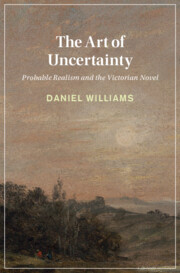
The Art of Uncertainty
- Probable Realism and the Victorian Novel
-
- Published online:
- 29 February 2024
- Print publication:
- 07 March 2024
Chapter 11 - Reading the Nonevental
-
-
- Book:
- Nineteenth-Century Literature in Transition: The 1860s
- Published online:
- 01 February 2024
- Print publication:
- 08 February 2024, pp 203-218
-
- Chapter
- Export citation
3 - London Calling, 1836–1842
-
- Book:
- Understanding Charles Darwin
- Published online:
- 31 August 2023
- Print publication:
- 14 September 2023, pp 51-66
-
- Chapter
- Export citation
5 - “[T]his view of life, with its several powers”
-
- Book:
- Understanding Charles Darwin
- Published online:
- 31 August 2023
- Print publication:
- 14 September 2023, pp 97-125
-
- Chapter
- Export citation
7 - The Struggle Is Real
-
- Book:
- Understanding Charles Darwin
- Published online:
- 31 August 2023
- Print publication:
- 14 September 2023, pp 147-169
-
- Chapter
- Export citation
Concluding Remarks
-
- Book:
- Understanding Charles Darwin
- Published online:
- 31 August 2023
- Print publication:
- 14 September 2023, pp 170-178
-
- Chapter
- Export citation
4 - Darwin–Wallaceism
-
- Book:
- Understanding Charles Darwin
- Published online:
- 31 August 2023
- Print publication:
- 14 September 2023, pp 67-96
-
- Chapter
- Export citation
2 - The Truth About Atolls
-
- Book:
- Understanding Charles Darwin
- Published online:
- 31 August 2023
- Print publication:
- 14 September 2023, pp 31-50
-
- Chapter
- Export citation
1 - The Evolutionary Darwins, 1794–1835
-
- Book:
- Understanding Charles Darwin
- Published online:
- 31 August 2023
- Print publication:
- 14 September 2023, pp 5-30
-
- Chapter
- Export citation
6 - Saint Charles’s Place
-
- Book:
- Understanding Charles Darwin
- Published online:
- 31 August 2023
- Print publication:
- 14 September 2023, pp 126-146
-
- Chapter
- Export citation
Introduction: The Legends of Charles Darwin
-
- Book:
- Understanding Charles Darwin
- Published online:
- 31 August 2023
- Print publication:
- 14 September 2023, pp 1-4
-
- Chapter
- Export citation
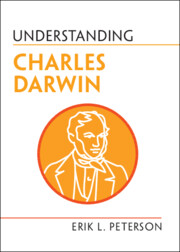
Understanding Charles Darwin
-
- Published online:
- 31 August 2023
- Print publication:
- 14 September 2023
Chapter 12 - Rather Unpleasant Stories
- from Part III - Revolutions and Empires
-
-
- Book:
- The Nation in British Literature and Culture
- Published online:
- 20 July 2023
- Print publication:
- 10 August 2023, pp 207-224
-
- Chapter
- Export citation
4 - After Criminality
- from Part II - Demotic Celebrities
-
- Book:
- Fashionable Fictions and the Currency of the Nineteenth-Century British Novel
- Published online:
- 11 May 2023
- Print publication:
- 25 May 2023, pp 190-238
-
- Chapter
- Export citation
21 - Two Dongo Novels
- from Part VII - Texts
-
- Book:
- Death in Old Mexico
- Published online:
- 02 March 2023
- Print publication:
- 09 March 2023, pp 225-243
-
- Chapter
- Export citation
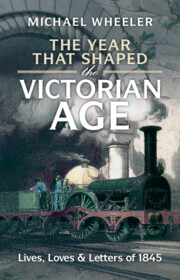
The Year That Shaped the Victorian Age
- Lives, Loves and Letters of 1845
-
- Published online:
- 08 December 2022
- Print publication:
- 22 December 2022
Introduction
-
- Book:
- Queer Kinship after Wilde
- Published online:
- 15 September 2022
- Print publication:
- 06 October 2022, pp 1-30
-
- Chapter
- Export citation
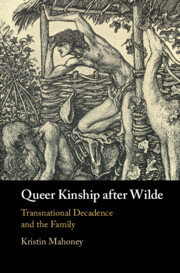
Queer Kinship after Wilde
- Transnational Decadence and the Family
-
- Published online:
- 15 September 2022
- Print publication:
- 06 October 2022
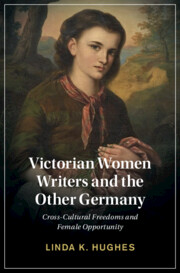
Victorian Women Writers and the Other Germany
- Cross-Cultural Freedoms and Female Opportunity
-
- Published online:
- 02 June 2022
- Print publication:
- 09 June 2022
Chapter 2 - Victorian
-
- Book:
- Modern British Nature Writing, 1789–2020
- Published online:
- 10 March 2022
- Print publication:
- 17 March 2022, pp 84-130
-
- Chapter
- Export citation



